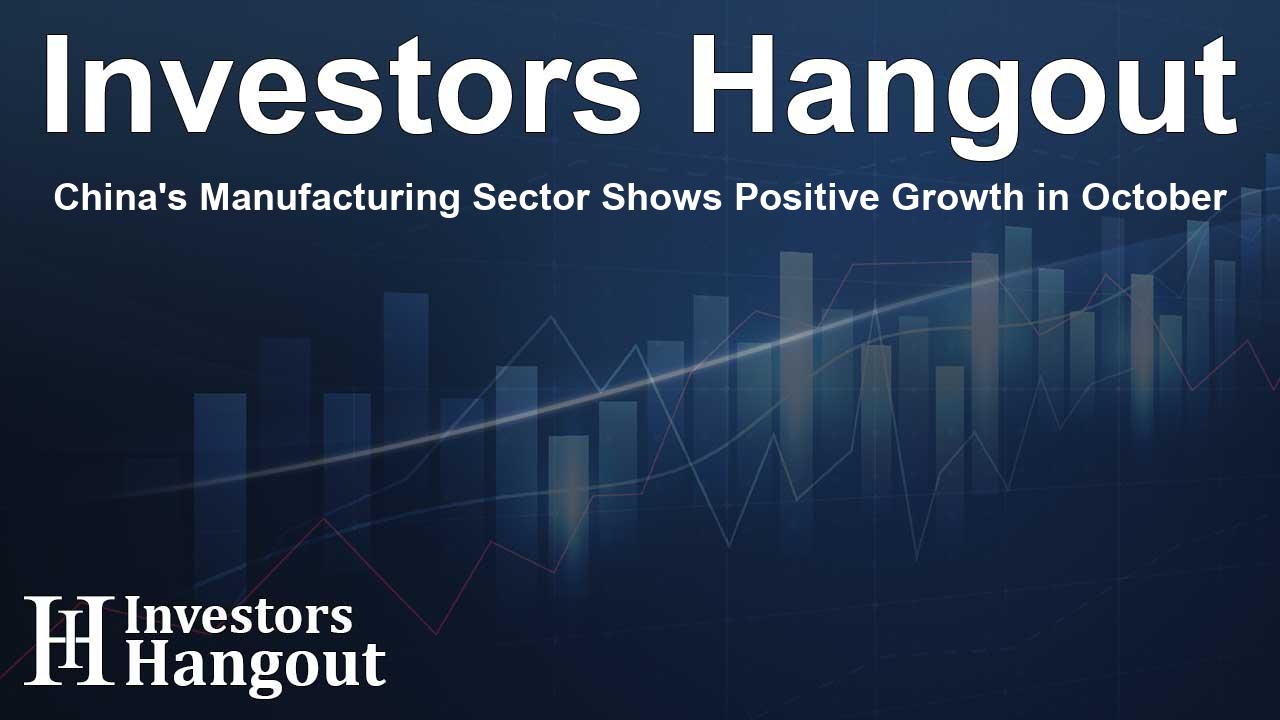China's Manufacturing Sector Shows Positive Growth in October

Manufacturing Activity Boost in October
In October, a positive trend emerged in China's manufacturing sector, marking the first expansion after a six-month period of contraction. This development, revealed by an official survey, has renewed hopes among policymakers regarding the effectiveness of new economic stimulus measures.
Understanding the Purchasing Managers' Index
The official purchasing managers' index (PMI) for October increased to 50.1, up from 49.8 in September. This slight rise is significant as it crosses the critical 50-point threshold that distinguishes economic growth from contraction, indicating a potential turnaround in the industrial landscape.
Significance of PMI Data
The PMI is a crucial indicator for assessing the health of the manufacturing sector. A reading above 50 indicates growth, while a reading below suggests a decline. The fact that October witnessed an uptick suggests that manufacturers are starting to feel more confident and are likely ramping up production and hiring.
Government Stimulus Measures
Policymakers have expressed optimism over the introduction of fresh stimulus measures aimed at revitalizing the economy. These initiatives could include infrastructure investments and incentives aimed at boosting domestic consumption. This proactive approach aims to enhance economic stability amidst global uncertainties.
Outlook for Future Growth
The optimism surrounding the PMI increases is tempered by ongoing challenges external to China's control, such as supply chain disruptions and fluctuating global demand. Nonetheless, the expansion in manufacturing suggests that policies are beginning to take effect, promising a gradual recovery if the trend continues.
Conclusion: A Hopeful Future for Manufacturing
China's recent manufacturing growth is a hopeful sign for its economy, signaling that the latest stimulus efforts may be starting to pay off. If sustained, this momentum could positively influence various sectors and overall economic performance.
Frequently Asked Questions
1. What does a PMI value above 50 signify?
A PMI value above 50 indicates that the manufacturing sector is expanding, while a value below 50 signifies contraction.
2. Why is October important for China's manufacturing?
October is significant as it marks the first month of expansion in manufacturing activity after six months of contraction.
3. How do government stimulus measures impact manufacturing?
Government stimulus measures can help boost production, increase investment in infrastructure, and enhance consumer demand, leading to growth in manufacturing.
4. What challenges does China's manufacturing face?
China's manufacturing sector faces global challenges like supply chain disruptions, changing market demands, and international trade tensions.
5. Can the manufacturing growth be sustained?
While October's growth is promising, its sustainability will depend on the continuity of supportive government policies and overall global economic conditions.
About Investors Hangout
Investors Hangout is a leading online stock forum for financial discussion and learning, offering a wide range of free tools and resources. It draws in traders of all levels, who exchange market knowledge, investigate trading tactics, and keep an eye on industry developments in real time. Featuring financial articles, stock message boards, quotes, charts, company profiles, and live news updates. Through cooperative learning and a wealth of informational resources, it helps users from novices creating their first portfolios to experts honing their techniques. Join Investors Hangout today: https://investorshangout.com/
Disclaimer: The content of this article is solely for general informational purposes only; it does not represent legal, financial, or investment advice. Investors Hangout does not offer financial advice; the author is not a licensed financial advisor. Consult a qualified advisor before making any financial or investment decisions based on this article. The author's interpretation of publicly available data shapes the opinions presented here; as a result, they should not be taken as advice to purchase, sell, or hold any securities mentioned or any other investments. The author does not guarantee the accuracy, completeness, or timeliness of any material, providing it "as is." Information and market conditions may change; past performance is not indicative of future outcomes. If any of the material offered here is inaccurate, please contact us for corrections.